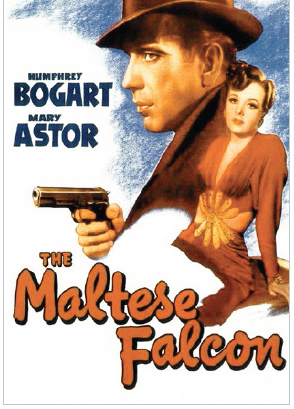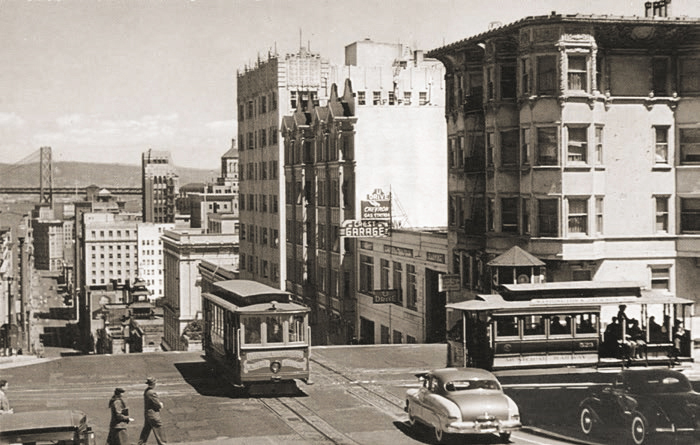City of Noir
 |
|
|
 |
|
|
 |
 |
|
|
Even before some provocative American movies of the 1940s gave rise out of Europe to the term 'film noir,' observers had identified San Francisco, the colorful town they'd soon nickname 'Baghdad by the Bay,' as a place where such a thing could find ample modus operandi.
Back in 1890, a character in Oscar Wilde's novel The Picture of Dorian Gray comments, "It is an odd thing, but everyone who disappears is said to be seen at San Francisco. It must be a delightful city, and possess all the attractions of the next world."
Then, of course, there is whoever spent the coldest winter of their life one summer in San Francisco, a quip often attributed to Mark Twain.
Turns out fog and missing persons are useful elements when creating atmospheric crime flicks.
"San Francisco has always had an air of mystery about it," says Eddie Muller, the undisputed 'Czar of Noir' who created the Noir City film festival, which he's hosted each year since 2003 at the City's Castro Theatre. "In terms of crime films, it was perfect."
The son of a San Francisco sportswriter, Muller was initially drawn to film noir because the casts reminded him of the hard-luck characters of the boxing world where his father hung out.
"It wasn't just in the movies—I knew people like that," he recalled in a recent phone interview. "I was sort of fascinated with, 'How does all this fit together?'"
Of course, there are plenty of spellbinding film noirs staged in New York, Los Angeles, and Chicago, but the number and the quality of those set in the City by the Bay is pretty impressive. (See our sidebar for recommendations.)
"San Francisco is a good host for noir because it has a sense of a little bit of criminality in its reputation," says Anita Monga, former longtime programmer for the Castro Theatre and current artistic director of the San Francisco Silent Film Festival, who helped launch the Noir City fest. "The fog rolling in is also extremely noir to me."
"It has this glamor side and it has this really gritty side," said another local with a yen for noir, financial journalist Therese Poletti. When a noir is shot in San Francisco, she said, "It just adds this whole mystique."
"It's a metropolitan city with a lot of different cultures piled on top of each other," said Muller, who also hosts the Noir Alley program weekends on the Turner Classic Movies channel.
Indeed, perhaps it has something to do with the City being the most European of all big American cities in the mid-century, when the French film press noticed and named the genre in 1946 before anyone knew it existed.
Birth of noir
"No one in Hollywood who was making those movies called them film noir," Muller notes, explaining that if the movie's criminals were pros, it was a 'crime thriller,' whereas amateur killers populated 'murder dramas.'
Like many a social or artistic movement, some will say the genre existed for a decade or two before being permanently named. Given that these directors were making an unnamed but clearly different kind of movie, it's no surprise that there is debate about when this sinister style of cinema was hatched.




